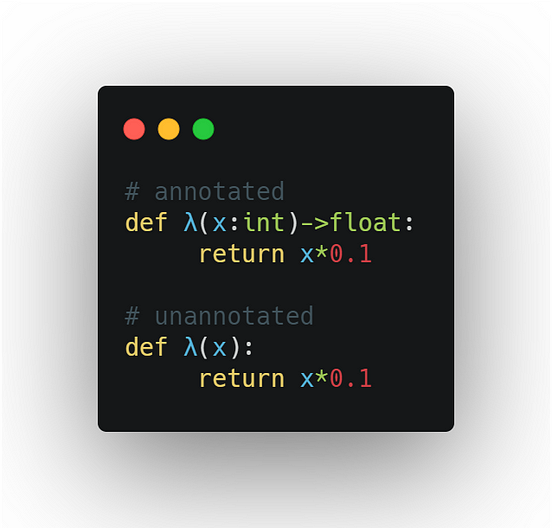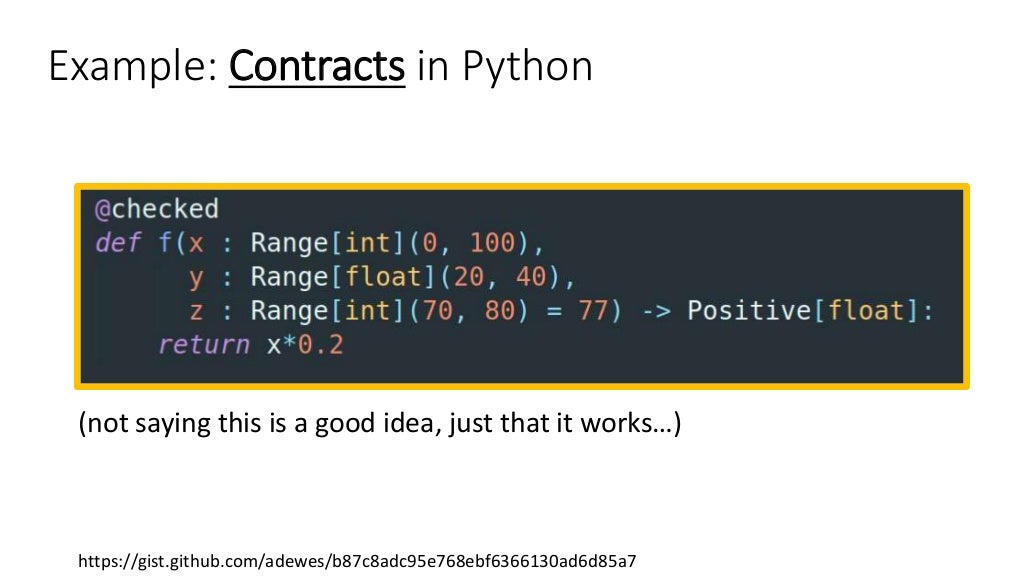
We accidentally swapped arguments in wrong_cake and me. Cake constructor takes a size argument of type int, not str. If you specify a type in a docstring, it will make use of it.

Python type annotations code#
Luckily, P圜harm’s code inspection comes to rescue. At the end, we make a use of these classes.Ĭan you spot all errors within seconds? I definitely cannot. Humans with different names and they can like either a Cake or a Human. In the example above, cakes come in different sizes and flavors. I also created for you a handy, printable cheat sheet on reStructuredText.
Python type annotations how to#
The docstring approach is also called a Legacy Type Syntax.Ī complete guide on how to use the Legacy Type Syntax is is available here. Since reStructuredText is the default and also the most common one, let’s use it in the following example. If you’re using P圜harm, you can set it in Tools/Python Integrated Tools under Docstring format. There are different formats of docstrings: Epytext, reStructuredText, NumPy, or Google. Unfortunately, that also means it cannot be used by type checking programs, such as MyPy (described later).ĭocumentation strings start and end with either triple quotes """Docstring""" or triple apostrophes '''Docstring'''. This approach is the most compatible one, because it does not rely on any language syntax and works in all versions of Python. There are different approaches, so let’s start with the most compatible and least restrictive one. Additionally, there are tools that can check proper use of types and display warnings before a customer discovers their improper use in form of bugs in production.

Type hints are useful for API/public methods, because you are letting the world know what type you expect (if you do expect a specific type). But if your internal method works just with strings, the code will be more self-defensive, if it will accept only strings and not anything that can be potentially (and incorrectly) converted to a string. You will also see why you may need a type support in the first place. The first article in series about typing support in Python will show you how to utilize type hints in this otherwise dynamic language.


 0 kommentar(er)
0 kommentar(er)
